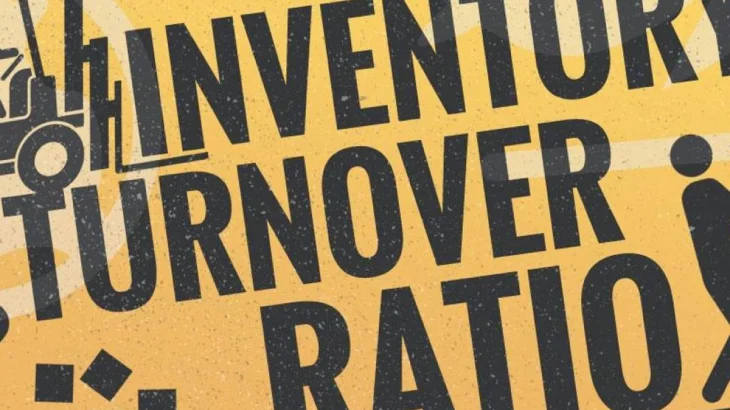Managing inventories effectively is essential to operating a profitable company. It involves balancing between decreasing excess stock that locks up precious resources and keeping adequate inventory to meet consumer demand. The Inventory Turnover Ratio is one of the primary measures used to assess inventory management. We will explore the idea of the Inventory Turnover Ratio in this blog, as well as its importance in viewpoint inventory management, and offer a thorough analysis of inventory management.
Table of Contents
What is Inventory Turnover Ratio?
The inventory turnover ratio is a financial indicator that counts the number of times an organization’s stock is sold and replaced during a given time frame, typically a year. It is an essential key performance indicator (KPI) that aids organizations in evaluating how well they manage their inventory.
To put it another way, the inventory turnover ratio shows how rapidly a business can sell its products and get new supplies. While a low ratio could point to overstocking or slowly moving products, a high turnover ratio indicates effective inventory management.
Calculating Inventory Turnover Ratio

To calculate the inventory turnover ratio, you need two pieces of information:
Cost of Goods Sold (COGS): This is a term used to describe the direct expenses incurred in manufacturing the products that a business sells over a given time.
Average Inventory Value: This is the mean amount of inventory a business has on hand for the same time frame.
The formula for calculating inventory turnover is:
InventoryTurnoverRatio = AverageInventoryValue / COGS
Significance of Inventory Turnover Ratio
After learning the definition of the inventory turnover ratio and how to compute it, let’s examine its importance.
- Efficient Use of Capital: A high inventory turnover ratio suggests that a company is making efficient use of its capital through rapid product sales and a reduction in the capital held in inventory. This can free up money for other crucial business needs, such as debt repayment or expansion investments.
- Reduction of Holding Costs: Holding costs can put a heavy financial strain on firms. These costs include storage, insurance, and depreciation. By preventing inventory from being idle for extended periods, an inventory turnover ratio lowers holding costs.
- Better Supplier and Customer Relationships: A company can ensure that it has the proper inventory to satisfy consumer demand by maintaining an ideal inventory turnover ratio. Improved connections and consumer satisfaction may follow from this. Furthermore, companies that effectively manage their inventory may receive better terms from suppliers.
- Reduction of Obsolescence: Long periods of time spent keeping things in stock increase the likelihood that they will become outdated. Businesses can take steps to stop losses by using an inventory turnover ratio to identify obsolete or slow-moving items.
- Stockouts Prevention: Stockouts can come from a low inventory turnover ratio, which can cause lost sales and disgruntled consumers. When products are available when customers need them, an ideal balance helps to avoid stockouts and lost income.
- Inventories Valuation: It’s critical to comprehend how much it costs to maintain inventories. Inventory obsolescence and the resulting write-offs are less likely when there is a high inventory turnover ratio, which may indicate that the inventory is moving swiftly.
- Business Strategy: A company’s business strategy may be deduced from the inventory turnover ratio as well. A firm with a low turnover ratio would place more importance on keeping various products on hand to satisfy consumer needs. In contrast, a company with a high turnover ratio might be more concerned with rapid product turnover and low inventory costs.
- Sector and Industry Analysis: You can obtain important information about a company’s competitive position by comparing its inventory turnover ratio to that of its sector benchmarks or industry peers. Businesses can remain competitive by modifying their inventory management practices with this analysis.
Challenges and Considerations

Even though the inventory turnover ratio is a valuable indicator, it’s essential to take into account some of the difficulties and restrictions that come with using it:
- Industry Variability: Average inventory turnover ratios may differ between different industries. An industry’s definition of a good ratio may not apply to another.
- Seasonality: It’s important to consider seasonality when evaluating data since businesses with seasonal demand may see variations in their inventory turnover ratio.
- Costing Methods: The inventory turnover ratio can be impacted by the costing technique selection (weighted average, FIFO, LIFO, etc.), which can also affect the computed COGS. For comparisons to be helpful, costing methodologies must remain consistent.
- Different Inventory Types: The turnover ratio can be affected differently by slow-moving or perishable inventory in some businesses. When analyzing the ratio, it’s critical to take the inventory’s nature into account.
- Economic Conditions: The inventory turnover ratio is subject to the influence of external economic forces, including inflation. Accurate analysis requires monitoring and making adjustments for these kinds of issues.
Transform Your Future with Nobious
Your go-to partner for transforming your inventory control is Nobious! With the support of our knowledgeable staff and cutting-edge tools, your company can get a high inventory turnover ratio and benefit from lower expenses, better cash flow, and data-driven decision-making. Are you prepared to increase your company’s productivity and earnings? Reach out to us right now to begin your path of transformation. Our top goal is your success, and we’re determined to use optimal inventory management to make that happen. Don’t hesitate to take the next step toward a more wealthy future!

